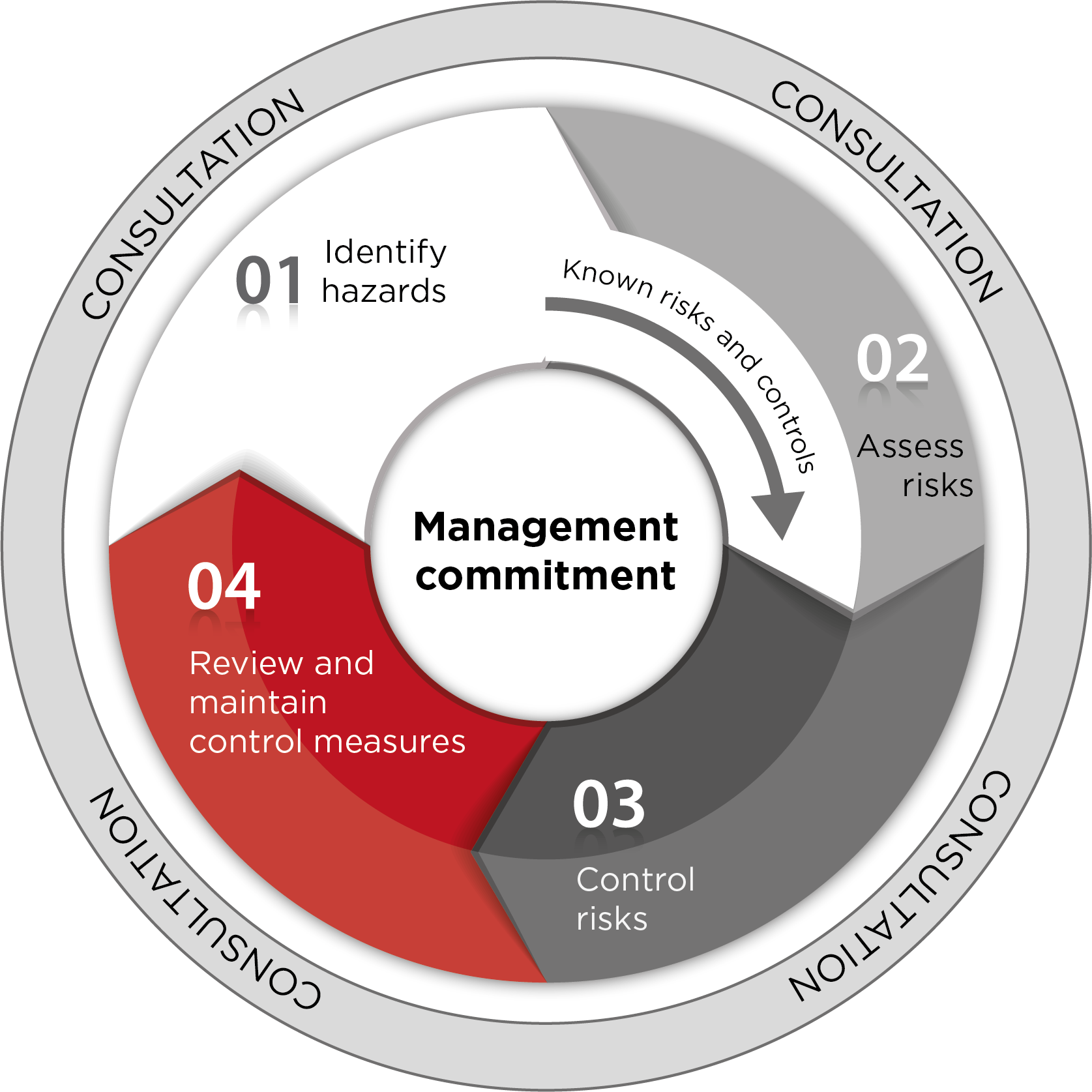How to provide a COVID-safe workplace for your staff and customers
- Last Updated : June 12, 2023
- 503 Views
- 8 Min Read

Workplace Health and Safety (WHS) is the primary guideline for any business operation across Australia. These requirements vary by state and territory. Safe Work Australia (SWA) is the national agency that educates and helps businesses comply with WHS requirements. However, SWA doesn't regulate or enforce any of the WHS laws. For legal information, exemptions, complaints, and claims, you must contact the WHS authority in your state or territory.
While WHS laws have always been around, COVID-19 has made them even more prominent in our everyday conversations. In this post, we'll look at the new guidelines that have come into effect due to our outbreaks.
Duties under the Workplace Health and Safety laws
Under the COVID-19 WHS guidelines, every employer has the following responsibilities.
Duty to workers: This means eliminating, or at least minimising, the risk of COVID-19 infection. Activities include allowing work-from-home arrangements, enforcing COVID-safe behaviour such as proper hand hygiene, mask-wearing, and social distancing, mandating that workers stay home if they're sick or have been exposed, and regularly cleaning the workspace.
Duty to other stakeholders, including customers, visitors, and other vendors: Under this guideline, employers should take necessary measures to protect everyone who enters the premises, such as setting up sanitising stations, requiring patrons to practice safe health practices, enabling online and click-and-collect shopping, and capping the number of people allowed in the workspace at any one time.
Duty to inform and educate stakeholders: Every business should communicate with constituents about the current situation, and educating them about safe working conditions whether they work from home or come into the workplace, the importance of wearing masks and practising good hygiene, and training people to use protective equipment such as PPE and temperature monitors.
Duty to consult: One of the most important duties of the employer is to consult with their stakeholders about setting up protective measures. This means you have to discuss with your staff about risks of transmission, control measures like distancing rules and sanitisation, and vaccinations.
Learn more about these duties and how you can comply with them on the WHS website.
Whether you're an essential service operating during lockdowns or a business welcoming staff back into the office, first consider the risks for everyone who comes in through the doors.
COVID-19 risk assessment and management in the workplace
There's no one right way to assess risks in the workplace. However, it starts with talking to your staff, identifying the chances of one of your employees getting infected, and unknowingly spreading it to the others. Your assessment should include the likelihood of workplace transmission when you have necessary COVID-safe precautions in place. This will help you further analyse how effective your control measures are and what you can do to reduce the risk of transmission even more. For example, you might find that some of your staff only need to come to work for two days and can work from home the rest of the week. Alternatively, you can also allow them to work from home on alternate weeks, reducing the number of people in the workplace on a particular day.
A WHS risk assessment is an ongoing process, even when we're not in the middle of a pandemic. With this rapidly-circulating virus, public health recommendations change every day. Businesses operating during this time should periodically assess the risks and effectiveness of their control measures and implement new ones or modify them accordingly. You should also undertake a mandatory risk assessment when,
• There's a change in workplace settings and processes
• You reopen after a COVID lockdown
• You have been notified of a positive case in your workforce
• Your business has been identified as an exposure location
• Employees or customers express concern over your current WHS measures
• You recruit new staff or reopen after standing down employees
Conducting a risk assessment
There are four stages to a complete risk assessment: identifying hazards in the workplace, assessing the risks of those hazards, controlling those risks, and reviewing and maintaining control measures.
Throughout this process, you should consult your staff to effectively assess the risks of potential COVID exposure.

Source: Safe Work Australia
What hazards you face in your business depends on the nature and size of your operations. Apart from an employee testing positive to the infection, you may also have a potentially infectious customer in the store on a particular day. When conducting a risk assessment, you have to account for unknowingly infectious patrons and the risk their exposure poses to your employees and their households.
Although COVID-19 is the biggest hazard many businesses face today, it's not the only one. When you conduct a risk assessment, consider general risks like gas leaks and contamination; business-specific risks such as customers panic-buying pasta from your grocery store or if you're a cafe, crowding up for their first cup of the day; and unexpected risks such as increased demand, forcing employees to work overtime and under stress, jeopardising their physical and mental health.
SWA has also outlined 10 workplace principles to help employers understand and meet their obligations.
Measures to prevent and control the spread of infection
Implementing control measures doesn't have to be a daunting task. Depending on the severity of the situation, you can set up a range of activities. Here are a few:
Re-enforcing government directions: Public health advice will vary depending on whether your state or territory is in lockdown. If you're operating during a lockdown, make sure that you follow what your local government has indicated. This includes closing down operations for a limited period, complying with mask mandates for staff and patrons, rearranging furniture within your premises to accommodate social distancing requirements, limiting the number of people who can enter your store, and offering click-and-collect services and delivery.
Regular cleaning and sanitising: Even if your business hasn't been identified as an exposure location, you should implement thorough cleaning and sanitising as part of your working routine. Educate staff on best practices and provide safe equipment they can use to wipe down surfaces.
Testing and vaccination for employees: Based on the current situation in your jurisdiction, you can organise testing and vaccination facilities for your employees. If your staff members regularly interact with the public, you can also require your employees to get periodic tests to ensure there's no unintentional transmission in the workplace. If you plan to mandate vaccination for your employees, follow fair work principles. You can also give employees days off to get vaccinated or if they're unwell.
Improving ventilation within the workplace: We know that respiratory viruses (such as COVID-19) spread more quickly and easily in poorly ventilated areas. As a safety measure, rearrange your working structure to ensure that you have thorough ventilation within the workplace. Keep doors and windows open whenever possible. During winter months and unfavourable weather, limit the number of staff in the workplace to reduce risk.
Offering personal protective equipment: PPE is a broad term that includes face masks, shields, gloves, sanitisers, and protective outerwear if you run a business in health care settings. Even when you're not in lockdown, ensure that you have enough supply of these PPEs in your workplace so you can immediately hand them out for staff and customers who may not have one. Replenish your stock of PPE before you run out so that you don't have to close down operations while you're waiting for a delivery.
Supporting the government's contact tracing measures: All state and territory governments have approved Check-In mobile apps for businesses. Checking in is mandatory for customers and staff upon entering your premises. As a business owner, you should make it easy for people to access your unique QR code to check-in. This means putting up posters inside and outside of your store, reminding and encouraging people to check-in. You should also offer alternative check-in arrangements for people who don't have a smartphone by having a dedicated staff member check them in or a paper check-in process where they can record their details. If you follow a paper-based check-in system, you should keep that record for at least 14 days. The Federal Government also has a COVIDSafe app for your staff and customers. Note that the COVIDSafe app is an additional precaution and isn't an alternative to your state government-approved check-in app, which is still mandatory. Learn more about setting up business check-in apps for:
• New South Wales
• Victoria
• Queensland
• South Australia
• Western Australia
• Northern Territory
• Tasmania
• Australian Capital Territory
Preparing for in-home services: If you run a business where your employees need to go into someone's home to complete a job, such as child carers, pet sitters, tradies, and cleaners, take the necessary precautions to reduce contact with that household. This includes ensuring,
• No one in that household is unwell or in quarantine.
• There's a safe way for your staff to enter and exit the household with minimal or no contact, such as a back entrance or keeping doors open to avoid touching surfaces.
• You clearly communicate with the household about when your staff will be arriving to help them appropriately prepare for your visit.
• You allocate staff to work in homes closest to their own homes to avoid extensive travel or pit stops.
• You assign the same staff or team to houses that require repeat visits so that you can minimise the risk to other staff members.
• When and if possible, you undertake your job virtually through telephone or video conferences.
Learn more about providing in-home services on the SWA website.
Working from home: If your staff can work from home, especially during an active outbreak and lockdown, then you should provide them with the facilities to do so. This can mean different things based on the nature of your business. For example, if your staff members usually work from an office environment, you can offer an allowance to help them set up a home office or reimburse electricity and internet expenses. In most cases, adjusting to a work-from-home scenario is all about allowing employees to be flexible with their working hours to successfully navigate home and work commitments. It's also important to recognise that working from home can be stressful and cause mental distress for many employees; be aware of possible issues, and support employees facing challenges with working from home.
Parting thoughts
COVID-19 has presented challenges that no government or business in the world has ever faced. Though it often seems easier just to give up than strive harder and longer, it's important to remember that this is only a temporary blip in our economy. And while it's a pretty big blip, and it's going to affect us even more before it gets better, know that you have loyal communities that support you and want to see you successfully come through this tough time. The best thing you can do, as a business owner and decision-maker, is to make your workplace a safe space for your employees and customers. Have a look at SWA's guide for conducting a risk assessment and the national guidelines for safe workplaces to learn more your role in keeping our society safe. Monitor your existing control measures and re-evaluate your situation regularly. Discuss with your colleagues and employees, and modify or implement new safety policies with the big picture in mind. Once you've finalised your safety protocols, communicate these directions to your broader community to assure them that you're doing all you can to keep everyone safe.









